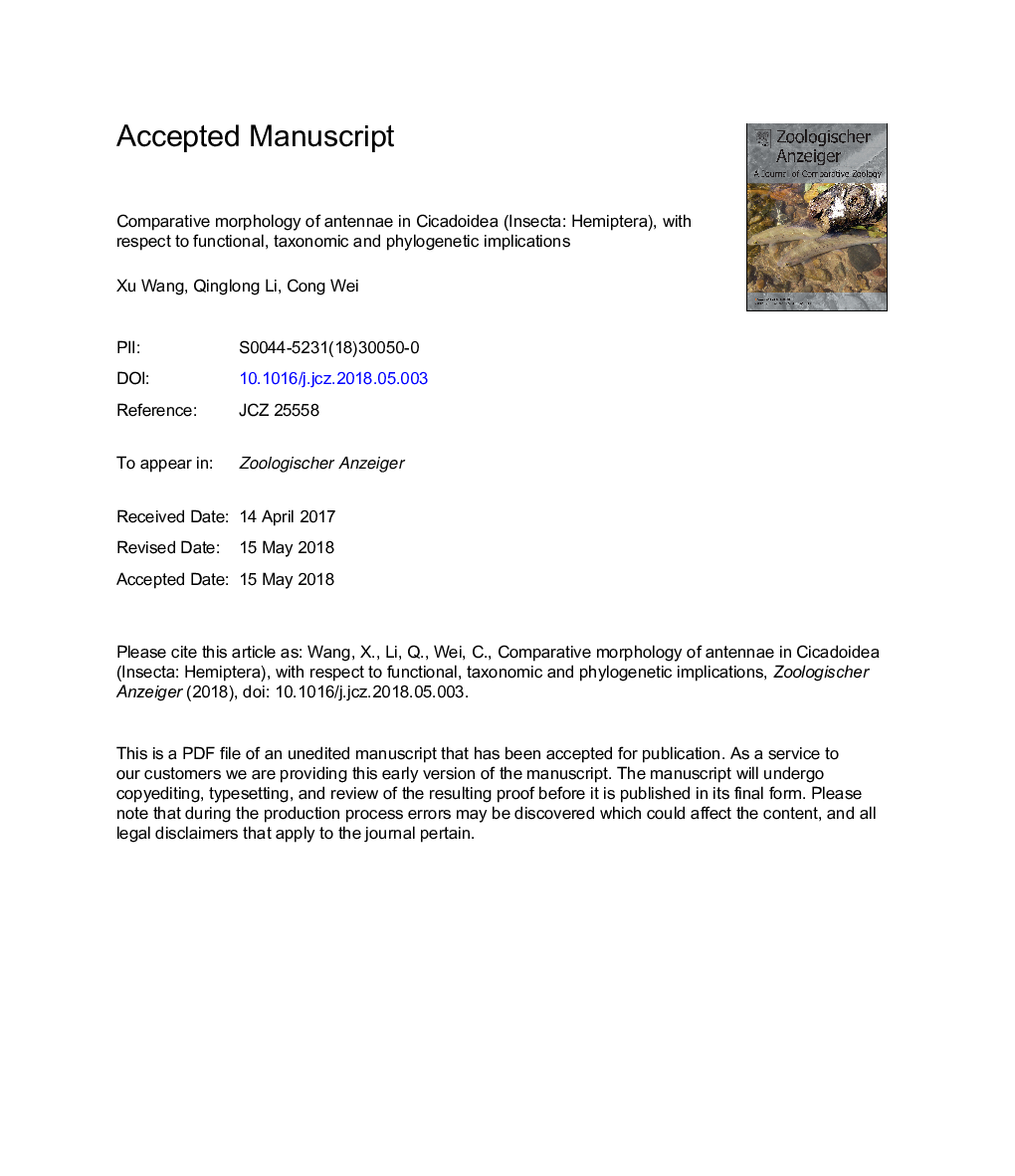| Article ID | Journal | Published Year | Pages | File Type |
|---|---|---|---|---|
| 10137866 | Zoologischer Anzeiger - A Journal of Comparative Zoology | 2018 | 48 Pages |
Abstract
The antennae of 25 cicada species were examined using light and scanning electron microscopies, with particular attention given to the structures and arrangement of antennal sensilla in phylogenic analysis. Eight morphologically different types of sensilla were observed: sensilla trichodea (subtypes I, II and III), sensilla basiconica, sensilla coeloconica (subtypes I, II and III), sensilla styloconica, foramen olfactorium, sensilla cavitata-peg (subtypes I and II), sensilla campaniformia and cuticular spines. The arrangement of antennal sensilla tends to be a highly regular distribution model, i.e., sensilla trichodea and sensilla basiconica mainly spread in the scape and pedicel, while sensilla coeloconica, foramen olfactorium and/or sensilla styloconica merely spread in the flagellum. The overall topology of phylogeny of Cicadidae based on antennal characters using PAUP, WinClada and IQtree analyses is compatible with the classification of previously related studies, but shows that the genus Karenia Distant, 1888 is more allied to the members of Cicadinae, and that the tribe Cicadatrini Distant, 1905 is located in the subfamily Cicadettinae instead of Cicadinae, which is consistent with the results of a recent molecular phylogenetic study of Cicadidae. The results imply that the traditional grouping of Cicadinae and Cicadettinae based on the presence or absence of timbal covers is unsound, which also supports related previous analyses based on morphology of Cicadidae. Related genera and tribes in Cicadidae need to be further addressed by phylogenetic analysis based on more morphological features combined with molecular data.
Related Topics
Life Sciences
Agricultural and Biological Sciences
Animal Science and Zoology
Authors
Xu Wang, Qinglong Li, Cong Wei,
